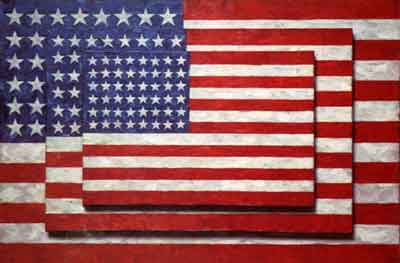The modern art dealer plays a crucial role the art market. A large proportion of values and prices of art -- especially contemporary -- is subjective, rendering it susceptible to sudden leaps and crashes, and incredible fluctuations in price. As a result of this volatility, the art dealer provides an invaluable service as a mediator between consumers and producers; the analogy to a sports agent is highly applicable. The art dealer has a unique ability to elevate an aspiring artist's career to the substantial reputation capital accumulated by each successful dealer and their ability to accredit, or provide a certification on quality to the art pieces they endorse. This could parallel the concept of "signaling" that we explored in the period of the Italian Renaissance; association with a famous art dealer, by virtue of the difficulty in securing their support, lends with it a powerful signal of quality and value in the eyes of the impressionable public collectors and consumers. For example, in the case of Larry Gagosian, a large portion of the prices he commands through sales owes itself to his highly visible role as a famous and successful dealer, and many of these pieces risk large devaluation in the event of his absence from the sale process. This importance could be have positive ramifications, in that it assures a degree of security for the careers of the represented artists, as they can rely on the prowess of the successful dealer in ensuring value for their artwork even in times of recession or market fluctuation; on the other hand, there could be considerable volatility when one's livelihood can be so closely tied with an individual salesman. The "agent" illustration adds an even greater number of players to the art market, as there is considerable competition between dealers for new artists in an effort to capture market share, but even this competitive aspect is positive as it ensures quality and effort on the part of the dealer, whose ultimate role is to maximize the value for each individual piece of work they represent, an ability that many artists potentially lack on their own. In an environment where it has been historically difficult to accurately determine the valuation of each artists current and future market potential, dealers serve as "market makers," ultimately creating artistic commerce and assigning value. It could be argued that high value, perhaps due to the salesmanship of the dealer, could indirectly determine historical and cultural significance, and not necessarily the other way around. In effect, this can be attributed to the general desire of the wealthy to own art as examples of social status and magnificence, which can be accomplished as much through dollar prices as be the quality of the art, an example that once again draws on the concept of signaling. The relative importance of the dealer enables them to demand extraordinarily high commissions from sales, as Gagosian can command a 50/50 split in the sale of his artist's pieces, a margin that is unheard of in other traditional roles of an agent.
An example of a highly influential art dealer who is considered a key rival of Larry Gagosian is Arne Glimcher, founder of the prestigious Pace Gallery, based in New York City. It represents many contemporary artists and also the estates of notable figures such as Pablo Picasso and Agnes Martin. Glimcher founded the gallery at the age of 22 in 1960 and has grown the enterprise into a worldwide presence. A failed painter, his lifelong obsession with excellence drove him to become a student of art history and connoisseur of its modern commerce. Through a series of calculated risks, Glimcher won the loyalty of several rising artists like Chuck Close, and his business took off, as he eventually became the first dealer responsible for a $1 million sale of a living artist. His emphasis has never been business, however; he has stated that he never entered the profession to become rich, instead focusing on the beauty of art and a desire to become immersed in the art world. While an acknowledged rival of many prestigious art dealers, Glimcher represents a very different philosophy than a dealer like Gagosian, as his emphasis has never rested on maximization of value, gross expansion and the accumulation of wealth and recognition, and the creation of a strong "brand," but instead on the inherent beauty of art the the maximization of the art world in general; he can be seen as a closer parallel to Albert Barnes in this regard. While artists have been "poached" from Pace by Gagosian due to the promise of potentially higher market valuations and return, still other have been poached from Gagosian by Pace, due to the increased levels of loyalty, appreciation, and a focus on the artwork itself that is demonstrated by the Pace gallery.
Below is a picture of Three Flags by Jasper Johns, which was the subject of the first $1 million sale of a living artist's work, represented by Glimcher:
Perhaps indicative of the Pace gallery and its artistic connotation, Jasper Johns wrote a letter to Glimcher after the above sale, stating that "one million is a staggering figure, but let's not forget that it has nothing to do with art."
